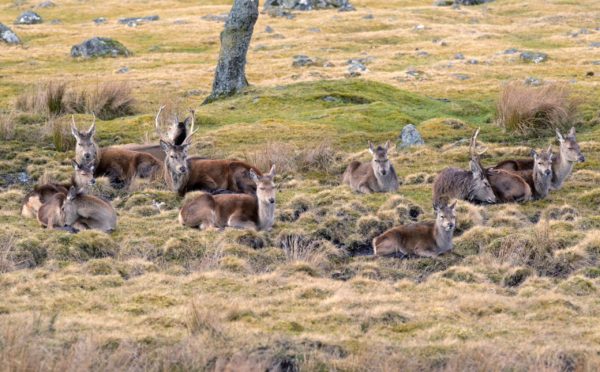Drivers have been warned to keep an eye out for deer, as the return of cars to the roads post-lockdown coincides with the most dangerous time for collisions.
The most recent statistics for deer-vehicle collisions (DVCs) in Scotland show that the Scottish SPCA and Forestry Commission were called out to far more incidents Aberdeenshire than any other council area.
In 2018, the two organisations attended 142 incidents in the region – 35 more than Fife, which had the second-highest amount.
In third place was the Highlands, with 99 such incidents.
Despite its small size, Aberdeen City ranked eighth among all Scottish council areas for SSPCA and Forestry Commission DVC call-outs, with 33 incidents in 2018.
The statistics were collated by NatureScot, who warn that the number of collisions between deer and vehicles in Scotland could be as many as 9,000 a year, based on extrapolations from sample data.
These collisions result in between 50 and 100 human injuries every year.
The number of DVCs typically increase around late May and June, as young deer disperse to look for their own territory – coinciding this year with many people hitting the road to take advantage of the end of lockdown.
‘Slow down and watch out’
NatureScot wildlife management officer Jamie Hammond said: “Particularly in peak times, we advise motorists to slow down and watch for deer crossing roads.
“Be aware that if you’re driving near woods, deer can suddenly appear before you have time to brake.
“If you do hit a deer, report it to the police even if you’re uninjured and your car isn’t damaged, as the deer may be fatally injured and suffering.”
The number of DVCs in Scotland has been increasing over the past 50 years, as the range and population of wild deer has increased too.
Perhaps unsurprisingly, this trend has stalled in the last 14 months as Covid restrictions lowered traffic flows around the country.
However, the return to normal life risks a return to the previous level of collisions.
Tips for dealing with deer on the road
- Try not to suddenly swerve to avoid hitting a deer. A collision into oncoming traffic could be even worse.
- Only brake sharply and stop if there is no danger of being hit by following traffic. Try to come to a stop as far away from the animals as possible to allow them to leave the roadside without panic, and use your hazard warning lights.
- After dark, use full-beams when there is no oncoming traffic, as this will illuminate the eyes of deer on or near a roadway and give you more time to react. But dim your headlights when you see a deer or other animal on the road so you don’t startle it.
- Report any deer-vehicle collisions to the police, who will contact the local person who can best help with an injured deer at the roadside. Do not approach an injured deer yourself – it may be dangerous.
